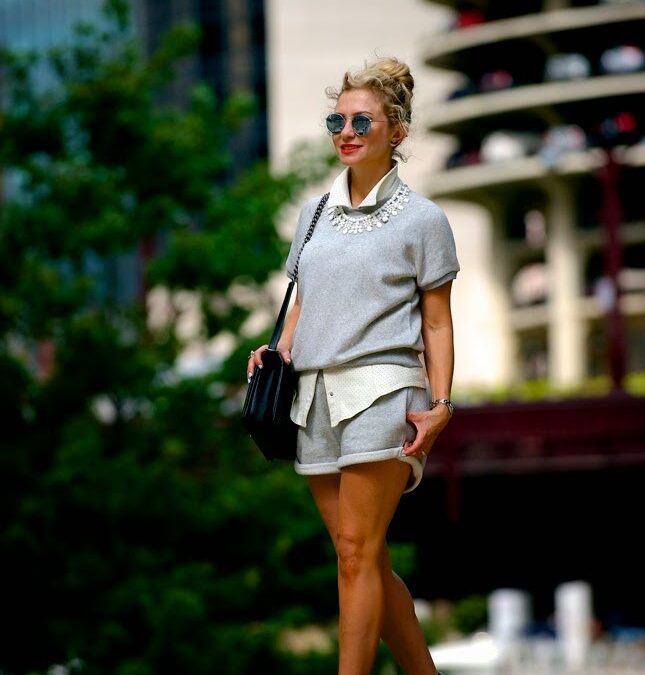Layering is a fundamental fashion technique that not only keeps you warm but also adds depth, dimension, and personality to your outfits. Mastering the art of layering can elevate your style, allowing you to create versatile and visually interesting looks. Here’s a comprehensive guide on how to layer like a pro, no matter the season or occasion.
Start with a Solid Base
The foundation of any well-layered outfit is a solid base layer. This is the layer closest to your skin, so it should be comfortable and fitted to avoid bulkiness.
Essential Base Pieces:
Basic Tees and Tanks: Choose neutral-colored tees or tanks that can easily blend with various layers.
Turtlenecks: A fitted turtleneck is a versatile base that adds warmth and can be dressed up or down.
Tips for Success: Stick to thinner fabrics for your base layer to prevent your outfit from becoming too bulky. Opt for neutral tones like black, white, gray, or beige, as these colors are easy to pair with additional layers.
Add Mid-Layers for Warmth and Texture
Mid-layers are where you can get creative with textures, patterns, and colors. This layer adds warmth and is visible, so it’s important to choose pieces that complement your overall look.
Key Mid-Layer Pieces:
Sweaters and Cardigans: Opt for chunky knits, cashmere sweaters, or open-front cardigans that add texture and warmth.
Button-Up Shirts: A classic button-up shirt can be layered under a sweater or over a base tee for a polished look.
Tips for Success: Mix textures like wool, cotton, and cashmere to add depth to your outfit. Don’t be afraid to experiment with patterns like plaid or stripes to introduce visual interest.
Incorporate Outer Layers for Structure and Style
Outer layers are the most visible and typically the most substantial layer of your outfit. These pieces not only provide warmth but also define the overall silhouette of your look.
Essential Outer Layers:
Blazers: A tailored blazer adds structure and can instantly elevate a casual outfit.
Coats and Jackets: Trench coats, leather jackets, and parkas are perfect for adding style and warmth to your ensemble.
Tips for Success: Choose outer layers that complement the rest of your outfit in both color and style. Ensure that your outer layer isn’t too tight, allowing room for the layers underneath.
Focus on Accessories to Complete the Look
Accessories play a crucial role in layering, adding the finishing touches to your outfit. They can also introduce additional layers without adding bulk.
Key Accessories for Layering:
Scarves: Choose scarves in various fabrics, from lightweight cotton to chunky knits, to add both warmth and style.
Belts: A belt can help define your waist when layering oversized pieces or create a polished look with a blazer.
Tips for Success: Choose accessories that complement your layers in color and texture. Don’t overdo it; sometimes less is more when it comes to accessorizing a layered look.
Balance Proportions for a Flattering Silhouette
One of the most important aspects of layering is maintaining a balanced silhouette. You want to avoid looking bulky or overwhelmed by your layers.
Proportion Tips:
Mix Fitted with Loose: Pair fitted base layers with looser mid and outer layers to create a balanced look. For example, wear a slim turtleneck with a chunky cardigan and a structured coat.
Play with Lengths: Experiment with different lengths, such as layering a long coat over a shorter sweater or dress. This adds visual interest and keeps the outfit from looking too boxy.
Tips for Success: Always try on your layered outfits before heading out to ensure they are comfortable and flattering. Adjust as needed to achieve the right balance.
Seasonal Layering Tips
Layering isn’t just for cold weather. You can adapt this technique for every season by choosing the right fabrics and combinations.Layering isn’t just for cold weather. You can adapt this technique for every season by choosing the right fabrics and combinations.
Spring and Summer:
Opt for lightweight fabrics like cotton, linen, and chambray.
Fall and Winter:
Focus on warmer fabrics like wool, cashmere, and flannel.
Tips for Success: Adapt your layering technique to the season by choosing appropriate fabrics and weights. In warmer months, stick to breathable layers, while in colder months, opt for insulating pieces.
























